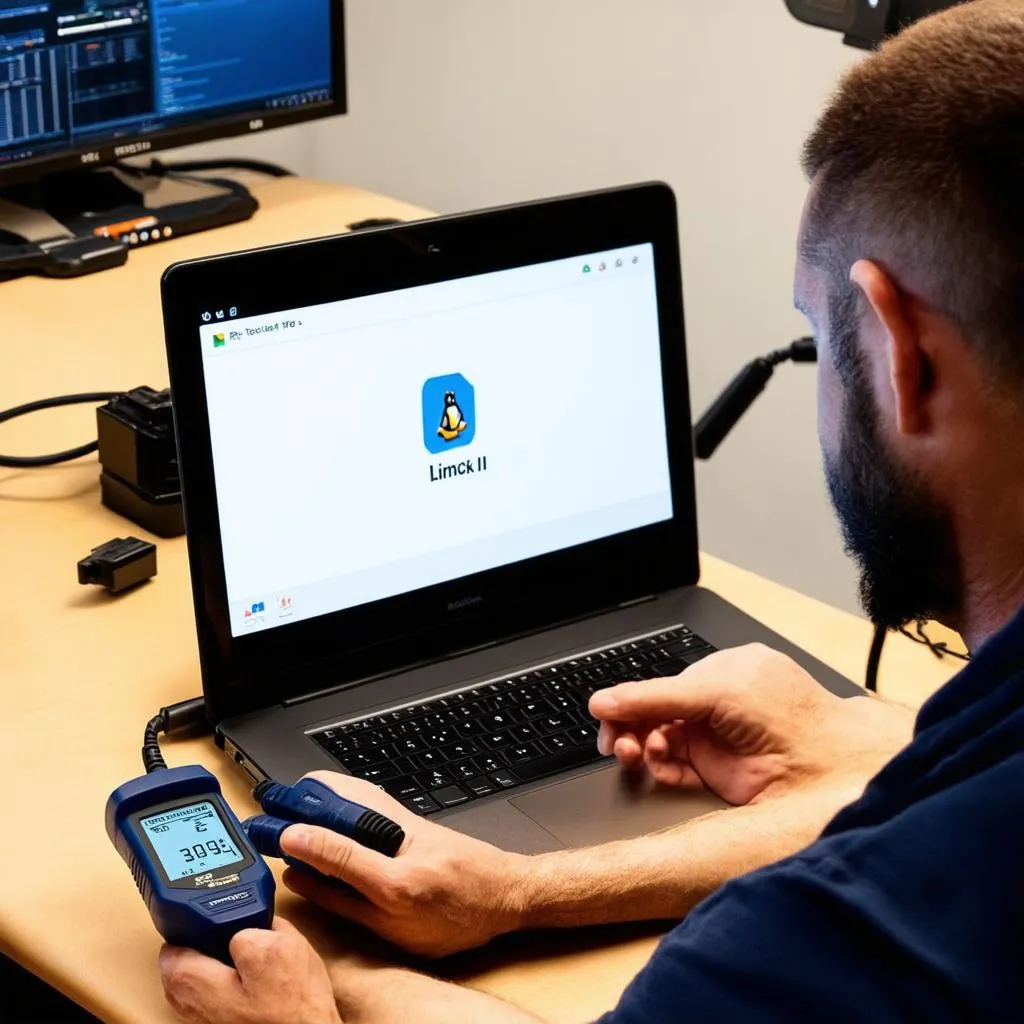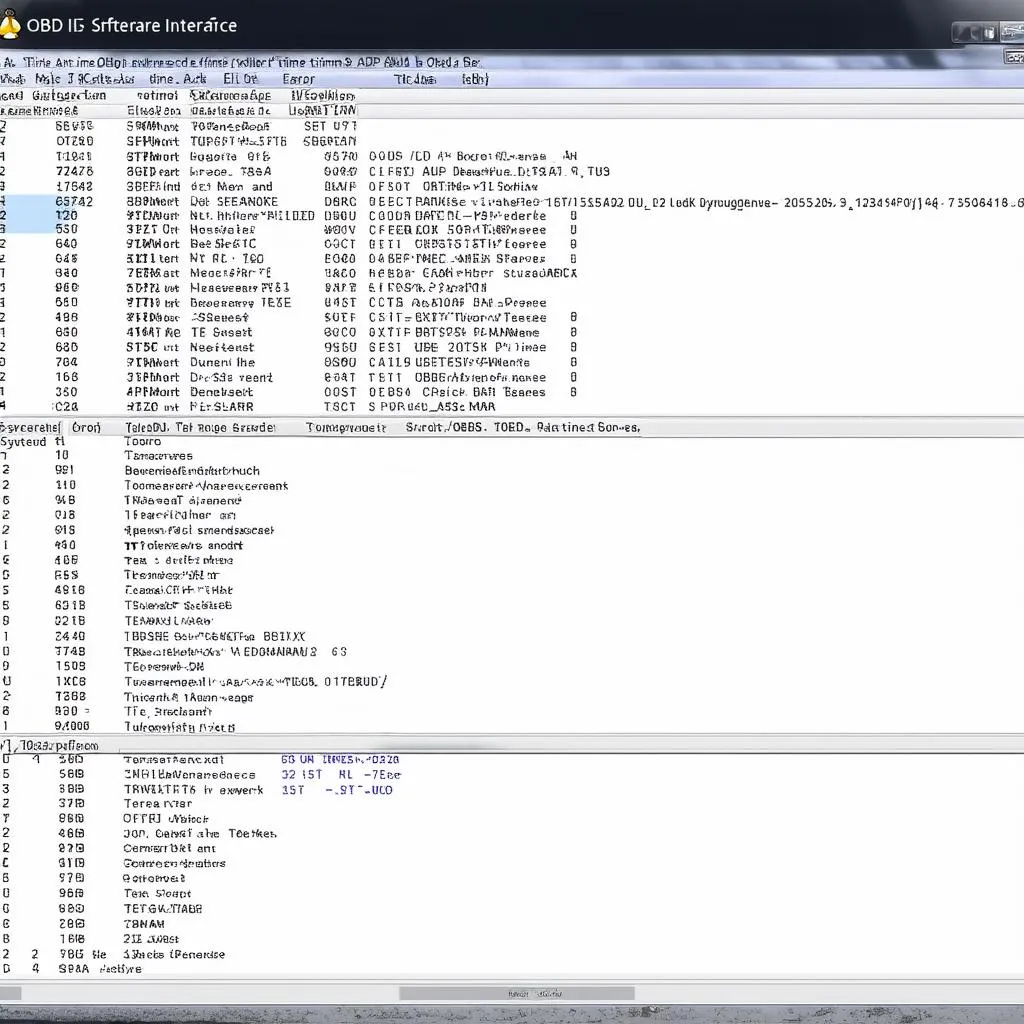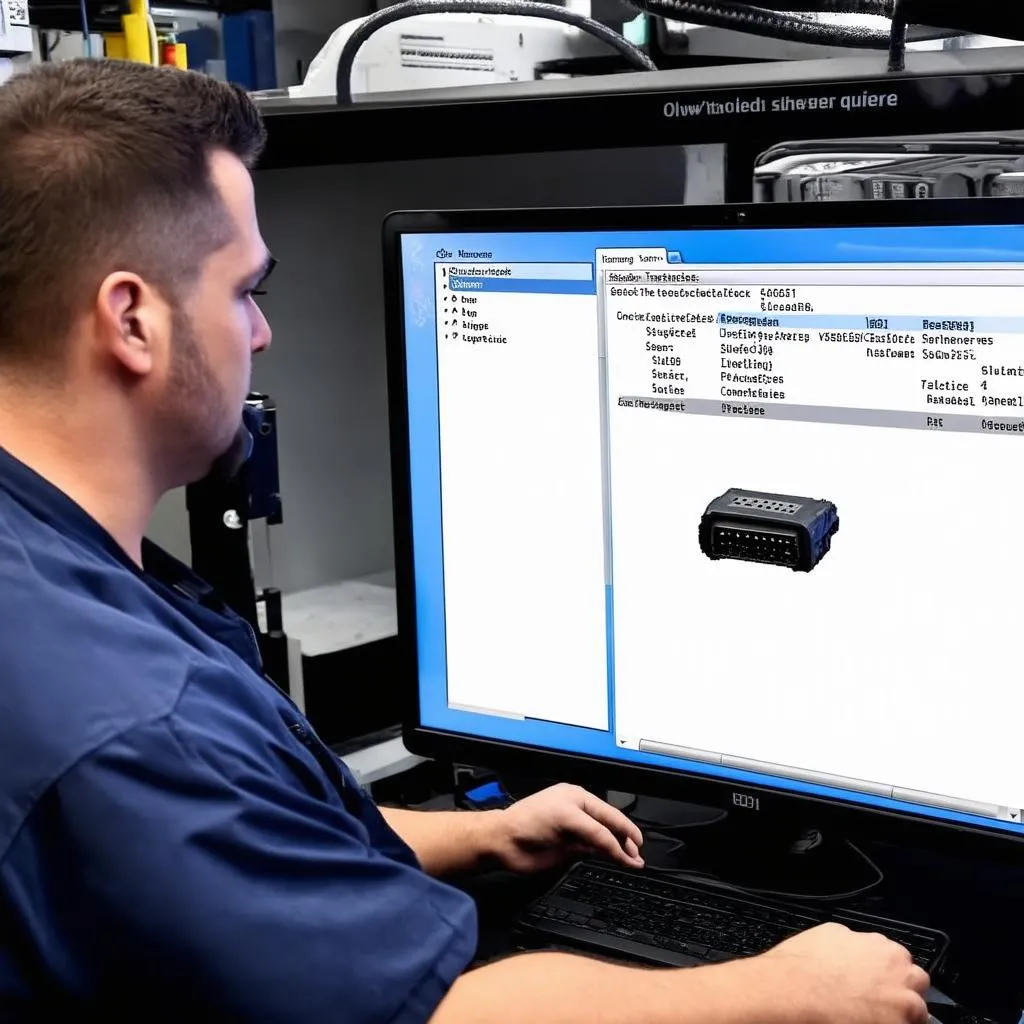Have you ever been stuck trying to diagnose a car issue and wished you had a simple, reliable solution for your Linux system? That’s where OBD II software for Linux comes in! If you’re a mechanic or car enthusiast using a Linux-based operating system, having access to OBD II software is essential for efficient car diagnostics and repairs.
The Importance of OBD II Software for Linux
Understanding the Significance of OBD II Software for Mechanics
OBD II (On-Board Diagnostics II) software provides a powerful tool for mechanics to understand the complexities of a vehicle’s electronic systems. Imagine trying to diagnose a malfunctioning sensor without having access to the intricate information stored within the vehicle’s control modules. It’s like trying to decipher a foreign language! With OBD II software, you can access a treasure trove of data, including real-time engine parameters, fault codes, and sensor readings, which are crucial for pinpointing the root cause of any issue.
The Role of Linux in the Automotive Industry
Linux is gaining momentum in the automotive industry. Many automakers and independent workshops are embracing Linux-based operating systems for their stability, customization, and open-source nature. However, one of the challenges in adopting Linux for automotive tasks was the lack of readily available OBD II software. Fortunately, developers are stepping up to fill this gap, offering mechanics a powerful arsenal of tools to tackle even the most complex automotive problems.
Getting Started with OBD II Software for Linux: A Step-by-Step Guide
Choosing the Right Software: A Glimpse into the Available Options
The first step is to find the right OBD II software for your Linux system. There are various options available, each with its own strengths and weaknesses. Some popular choices include:
- OpenDiag: This open-source software provides a comprehensive set of diagnostic tools for a wide range of vehicles. It’s a favorite among mechanics due to its flexibility and advanced features.
- OBD-Scan: This user-friendly software is designed to be simple and straightforward, making it ideal for beginners. It offers basic diagnostic capabilities and supports a wide range of OBD II protocols.
- ScanTool.net: This platform offers a range of OBD II tools, including a comprehensive diagnostic software called ScanTool.net OBDLink that is specifically tailored for Linux users.
Connecting Your OBD II Scanner: The Gateway to Your Vehicle’s Data
Once you’ve chosen your software, you’ll need to connect an OBD II scanner to your vehicle’s diagnostic port. You can choose from various scanners, including USB, Bluetooth, and Wi-Fi adapters. Remember to select a scanner compatible with your Linux system and the OBD II protocols supported by your car.
Setting Up Your Software: Connecting the Dots
Now it’s time to set up your chosen OBD II software on your Linux system. The process usually involves installing the software, configuring the scanner settings, and selecting the appropriate vehicle model. Most software provides clear instructions and guides to help you through the setup process.
Troubleshooting Common Issues: Navigating the Roadblocks
Dealing with Compatibility Challenges: Finding Solutions
One of the most common issues mechanics face is compatibility problems between their software and vehicles. Some vehicles may require specific protocols or drivers for proper communication. To overcome these challenges, you might need to experiment with different software options or update your scanner drivers. It’s also helpful to consult online forums and communities for support and advice from fellow mechanics who may have encountered similar issues.
Error Codes and Their Meanings: Demystifying the Diagnostic Language
Decoding error codes is a crucial part of car diagnostics. Understanding the language of these codes is like learning a new vocabulary. Most OBD II software comes with comprehensive error code databases, allowing you to interpret their meaning and identify potential causes for the problem.
Unreliable Connections: Addressing the Intermittent Hiccups
Sometimes, the connection between your OBD II scanner and the vehicle’s diagnostic port can be unstable. This could be due to faulty wiring, a malfunctioning scanner, or interference from other electronic devices. To address these issues, try different scanners, check your wiring, and ensure the scanner is positioned correctly.
Tips for Using OBD II Software Effectively: Maximizing Your Diagnostic Prowess
Exploring Data Streams: Diving Deep into Your Vehicle’s Functions
OBD II software provides a wealth of data that can shed light on various aspects of your vehicle’s performance. Explore data streams like engine speed, fuel pressure, coolant temperature, and oxygen sensor readings to gain valuable insights into the car’s health.
Recording Logs and Generating Reports: Documenting Your Findings
Documenting your diagnostic findings is essential for accurate troubleshooting and record-keeping. Most OBD II software allows you to record data logs, generate reports, and even create custom graphs to visualize trends in your vehicle’s performance.
Working with Live Data: Monitoring Your Vehicle’s Health in Real-Time
OBD II software provides real-time data readings, enabling you to monitor the vehicle’s performance as it operates. This is particularly useful for diagnosing intermittent problems that might not trigger a fault code but still affect the vehicle’s operation.
Seeking Expert Advice: Leveraging the Collective Knowledge
Don’t hesitate to seek help from other mechanics or online communities if you encounter any difficulties. Sharing your experiences and seeking guidance from fellow professionals can provide valuable insights and solutions to complex problems.
Looking Ahead: The Future of OBD II Software for Linux
The landscape of OBD II software for Linux is constantly evolving. Expect to see new and innovative tools emerging, offering even more powerful features and capabilities. Stay updated with the latest advancements in software and hardware to maximize your diagnostic potential.
Common Questions About OBD II Software for Linux: Addressing Your Queries
Q: What are the best OBD II software options for Linux?
A: Some popular choices include OpenDiag, OBD-Scan, and ScanTool.net OBDLink. Each software offers a unique set of features and capabilities, so choose the one that best aligns with your needs and experience level.
Q: How do I connect an OBD II scanner to my Linux system?
A: You’ll need a compatible OBD II scanner, such as a USB, Bluetooth, or Wi-Fi adapter. Ensure the scanner is compatible with your Linux system and the OBD II protocols supported by your car.
Q: What are some common issues I might encounter with OBD II software on Linux?
A: Common issues include compatibility problems, unreliable connections, and difficulty interpreting error codes. Consult online forums and communities for support and advice from fellow mechanics who may have encountered similar issues.
Additional Resources: Expanding Your Knowledge
- Free OBD II Software for PC
- ELM327-Based OBD II Adapter Software
- Does Python OBD Work with USB?
- ELM327 OBD USB Driver
- EFLM327 Bluetooth OBD Adapter: How to Use with Linux Kayak
Conclusion: Embracing the Power of OBD II Software for Linux
OBD II software for Linux empowers mechanics with the tools they need to tackle complex automotive diagnostics with ease. From accessing detailed data streams to interpreting error codes, these tools are indispensable for efficient car repair and maintenance. By embracing the power of OBD II software, you can unlock a world of possibilities and gain a deeper understanding of your vehicle’s inner workings.
For any assistance with OBD II software or automotive diagnostics, feel free to reach out to our team via WhatsApp at +84767531508. We have experienced automotive experts available 24/7 to support you.
 OBD II Scanner for Linux
OBD II Scanner for Linux
 OBD II Software Interface
OBD II Software Interface
 Linux OBD II Software Tutorial
Linux OBD II Software Tutorial